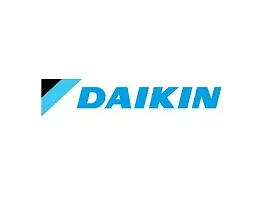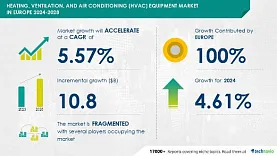The global HVAC Equipment Market is expected to grow significantly between 2024 and 2031. The market was valued at approximately $234.63 billion in 2023, and it is projected to reach around $409.6 billion by 2031, with a compound annual growth rate (CAGR) of 7.5% during this forecast period.
HVAC Equipment Market Overview
- Market Size and Growth
The global HVAC equipment market has been experiencing robust growth, driven by increased urbanization, industrial expansion, and rising consumer awareness about energy efficiency. global HVAC Equipment Market is expected to grow significantly between 2024 and 2031. The market was valued at approximately $234.63 billion in 2023, and it is projected to reach around $409.6 billion by 2031, with a compound annual growth rate (CAGR) of 7.5% during this forecast period. This growth is propelled by the need for advanced climate control systems in both residential and commercial sectors.
- Technological Advancements
Innovations in HVAC technology are central to market expansion. Smart HVAC systems, integrating IoT for remote monitoring and control, are gaining traction due to their energy-saving capabilities and enhanced user convenience. The adoption of variable refrigerant flow (VRF) systems and advanced heat pump technologies also contributes significantly to market growth, offering improved efficiency and performance.
- Energy Efficiency and Regulations
Energy efficiency is a major driver for the HVAC market, influenced by stringent regulations and standards aimed at reducing carbon footprints. Governments worldwide are implementing policies to encourage the use of energy-efficient HVAC systems, such as higher SEER (Seasonal Energy Efficiency Ratio) ratings and improved refrigerants. These regulations are pushing manufacturers to innovate and offer more sustainable solutions.
- Commercial Sector Demand
The commercial sector, including office buildings, retail spaces, and industrial facilities, constitutes a significant portion of the HVAC market. Increasing demand for climate control solutions in these spaces, driven by enhanced focus on employee comfort and productivity, is fueling market growth. Large-scale projects and retrofitting of existing buildings are also contributing to the increased demand for HVAC equipment.
- Residential Sector Growth
In the residential sector, the demand for HVAC systems is rising due to growing consumer expectations for comfort and energy efficiency. The increasing adoption of smart home technologies and the desire for advanced climate control systems are driving growth in this segment. Additionally, rising disposable incomes and homeownership rates are supporting the demand for high-quality HVAC solutions.
- Emerging Markets
Emerging markets, particularly in Asia-Pacific and Latin America, are experiencing rapid growth in the HVAC sector. Urbanization, economic development, and increasing infrastructure projects in these regions are driving the demand for HVAC equipment. As these markets continue to develop, they present significant opportunities for growth and expansion for HVAC manufacturers and suppliers.
- Challenges and Barriers
Despite the positive outlook, the HVAC equipment market faces challenges, including high initial costs and maintenance expenses. The complexity of installation and the need for skilled labor can also pose barriers to market growth. Additionally, fluctuating raw material prices and supply chain disruptions can impact the cost and availability of HVAC equipment.
- Competitive Landscape
The HVAC equipment market is highly competitive, with major players including Carrier, Trane Technologies, Lennox International, and Daikin Industries. Companies are focusing on product innovation, strategic mergers and acquisitions, and expanding their global presence to gain a competitive edge. The market is characterized by continuous technological advancements and efforts to meet evolving consumer and regulatory demands.
Geographic Dominance:
The HVAC equipment market exhibits notable geographic dominance, with North America and Asia-Pacific leading in market share. North America, driven by the United States and Canada, benefits from advanced infrastructure, stringent energy efficiency regulations, and high consumer demand for smart HVAC systems.
The region's mature market and technological innovation contribute significantly to its dominance. Conversely, Asia-Pacific is experiencing rapid growth due to urbanization, increasing industrial activities, and rising disposable incomes, particularly in countries like China and India.
The region's expanding construction sector and infrastructure development drive substantial demand for HVAC equipment. Europe also maintains a significant presence, bolstered by strong environmental regulations and a focus on energy-efficient systems. Meanwhile, Latin America and the Middle East show emerging potential, with growing investments in commercial and residential sectors contributing to gradual market expansion.
HVAC Equipment Market Key Players Shaping the Future
The HVAC Equipment market is significantly influenced by several key players, including Carrier Global Corporation, Daikin Industries Ltd., Johnson Controls International plc, Trane Technologies plc, Mitsubishi Electric Corporation, and LG Electronics Inc. These companies are known for their innovative technologies, energy-efficient solutions, and strong global presence, driving advancements and meeting diverse consumer needs across residential and commercial sectors.
Read More




